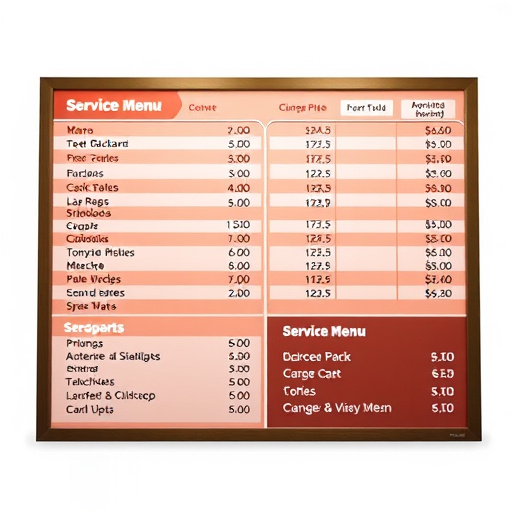Professional intake installation offers vehicle dealerships and owners significant benefits, including improved fuel economy, increased power, and reduced emissions. Skilled technicians ensure precise assembly, minimizing future issues. This service enhances engine reliability and contributes to long-term cost savings. Understanding the cost structure is crucial—labor expenses, varying based on project complexity, dealership size, and local skilled labor rates, often comprise a significant portion of the budget. By evaluating these factors, clients can gain clarity on investment needs for professional dealership installation. This practice is a game-changer, maximizing efficiency, minimizing costs, and enhancing productivity, leading to higher quality standards and client satisfaction.
In today’s competitive automotive landscape, professional intake installation (PII) is a game-changer for dealerships. This comprehensive guide delves into the multifaceted benefits of PII, exploring its advantages and impact on dealership operations. We dissect the intricate cost structure, specifically focusing on labor expenses, to provide a clear understanding. Additionally, we highlight how efficient installation practices can revolutionize dealership workflows, ultimately enhancing overall performance.
- Understanding Professional Intake Installation: Advantages and Impact
- Unraveling the Cost Structure: A Comprehensive Look at Labor Expenses
- Maximizing Efficiency: Streamlining Dealership Operations through Installation Practices
Understanding Professional Intake Installation: Advantages and Impact

Professional intake installation is a specialized service that offers numerous benefits for vehicle dealerships and their customers. This process involves the careful and precise assembly and configuration of various components within a car’s engine, ensuring optimal performance and efficiency. By employing skilled technicians for intake installation, dealerships can ensure precision and attention to detail, which directly translates to better fuel economy, increased power output, and reduced emissions.
The advantages extend beyond improved vehicle performance. Professional intake installation also reduces the risk of future issues by ensuring proper sealing and alignment. This minimizes potential problems related to air leaks or misalignment, enhancing the overall reliability and longevity of the engine. Moreover, it can contribute to cost savings in the long run, as efficient engines consume less fuel and require less frequent maintenance. The labor involved in professional intake installation is an investment that pays dividends in terms of vehicle performance, efficiency, and reduced environmental impact.
Unraveling the Cost Structure: A Comprehensive Look at Labor Expenses

When considering dealership installation, understanding the cost structure is paramount. One significant component that often commands a substantial portion of the budget is labor expenses. These costs can vary widely depending on several factors, including the complexity of the installation project, the size and type of dealership, as well as local wage rates for skilled labor.
A professional intake installation typically involves specialized technicians who possess expertise in handling intricate automotive systems. Their time, knowledge, and expertise are reflected in their hourly rates. Additionally, overhead costs associated with managing a workforce, such as insurance, training, tools, and equipment, also contribute to the overall labor expense. By carefully evaluating these variables, potential clients can gain a clearer picture of the investment required for a comprehensive and professional dealership installation.
Maximizing Efficiency: Streamlining Dealership Operations through Installation Practices

Maximizing Efficiency: Streamlining Dealership Operations through Installation Practices
Professional intake installation practices play a pivotal role in enhancing dealership operations, ultimately reducing costs and increasing productivity. By implementing efficient installation methods, dealerships can minimize labor-intensive tasks, which significantly cuts down on operational expenses. This is achieved through optimized processes that streamline every step of the installation process, from initial vehicle preparation to final quality checks.
Such streamlining ensures that vehicles are ready for customer pickup faster, allowing dealerships to service more clients in less time. Moreover, professional intake installations reduce the risk of errors and defects by employing skilled technicians who adhere to manufacturer guidelines. This not only maintains vehicle quality but also fosters client satisfaction, leading to repeat business and positive word-of-mouth referrals.
Professional intake installation offers dealerships a multitude of benefits, from enhanced operational efficiency to improved vehicle performance. By understanding the advantages and optimizing the cost structure, particularly regarding labor expenses, dealerships can maximize returns on their investment. Streamlining installation practices is key to staying competitive in today’s market, ensuring customer satisfaction, and achieving long-term success.














